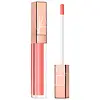What's inside
What's inside
 Key Ingredients
Key Ingredients

 Benefits
Benefits

 Concerns
Concerns

 Ingredients Side-by-side
Ingredients Side-by-side

Polybutene
Hydrogenated Polyisobutene
EmollientOctyldodecanol
EmollientSimmondsia Chinensis Seed Oil
EmollientEthylene/Propylene/Styrene Copolymer
Phenoxyethanol
PreservativeAroma
Parfum
MaskingTocopheryl Acetate
AntioxidantButylene/Ethylene/Styrene Copolymer
Tetrahexyldecyl Ascorbate
AntioxidantButyrospermum Parkii Butter
Skin ConditioningButyrospermum Parkii Butter Unsaponifiables
Skin ConditioningBHT
AntioxidantBenzyl Benzoate
AntimicrobialLimonene
PerfumingPolybutene, Hydrogenated Polyisobutene, Octyldodecanol, Simmondsia Chinensis Seed Oil, Ethylene/Propylene/Styrene Copolymer, Phenoxyethanol, Aroma, Parfum, Tocopheryl Acetate, Butylene/Ethylene/Styrene Copolymer, Tetrahexyldecyl Ascorbate, Butyrospermum Parkii Butter, Butyrospermum Parkii Butter Unsaponifiables, BHT, Benzyl Benzoate, Limonene
Hydrogenated Polyisobutene
EmollientDiisostearyl Malate
EmollientButyrospermum Parkii Butter
Skin ConditioningEthylene/Propylene/Styrene Copolymer
Silica Dimethyl Silylate
EmollientPunica Granatum Flower Extract
Skin ConditioningRosmarinus Officinalis Leaf Extract
AntimicrobialButylene/Ethylene/Styrene Copolymer
BHT
AntioxidantTocopherol
AntioxidantCalcium Sodium Borosilicate
Tin Oxide
AbrasivePolyethylene
AbrasiveMicrocrystalline Wax
Emulsion StabilisingCalcium Stearate
Cosmetic ColorantPolyglyceryl-2 Triisostearate
EmulsifyingSimmondsia Chinensis Seed Oil
EmollientRubus Idaeus Seed Oil
EmollientHelianthus Annuus Seed Oil
EmollientPhenoxyethanol
PreservativeCI 75470
Cosmetic ColorantIron Oxides
Mica
Cosmetic ColorantCI 15850
Cosmetic ColorantCI 77891
Cosmetic ColorantCI 19140
Cosmetic ColorantHydrogenated Polyisobutene, Diisostearyl Malate, Butyrospermum Parkii Butter, Ethylene/Propylene/Styrene Copolymer, Silica Dimethyl Silylate, Punica Granatum Flower Extract, Rosmarinus Officinalis Leaf Extract, Butylene/Ethylene/Styrene Copolymer, BHT, Tocopherol, Calcium Sodium Borosilicate, Tin Oxide, Polyethylene, Microcrystalline Wax, Calcium Stearate, Polyglyceryl-2 Triisostearate, Simmondsia Chinensis Seed Oil, Rubus Idaeus Seed Oil, Helianthus Annuus Seed Oil, Phenoxyethanol, CI 75470, Iron Oxides, Mica, CI 15850, CI 77891, CI 19140
 Reviews
Reviews

Ingredients Explained
These ingredients are found in both products.
Ingredients higher up in an ingredient list are typically present in a larger amount.
BHT is a synthetic antioxidant and preservative.
As an antioxidant, it helps your body fight off free-radicals. Free-radicals are molecules that may damage your skin cells.
As a preservative, it is used to stabilize products and prevent them from degrading. Specifically, BHT prevents degradation from oxidation.
The concerns related to BHT come from oral studies; this ingredient is currently allowed for use by both the FDA and EU.
However, it was recently restricted for use in the UK as of April 2024.
Learn more about BHTWe don't have a description for Butylene/Ethylene/Styrene Copolymer yet.
This ingredient is also known as shea butter. It is an effective skin hydrator and emollient.
Emollients help soothe and soften your skin. It does this by creating a protective film on your skin. This barrier helps trap moisture and keeps your skin hydrated. Emollients may be effective at treating dry or itchy skin.
Shea butter is rich in antioxidants. Antioxidants help fight free-radicals, or molecules that may harm the body. It is also full of fatty acids including stearic acid and linoleic acid. These acids help replenish the skin and keep skin moisturized.
While Shea Butter has an SPF rating of about 3-4, it is not a sunscreen replacement.
Shea butter may not be fungal acne safe. We recommend speaking with a professional if you have any concerns.
Learn more about Butyrospermum Parkii ButterWe don't have a description for Ethylene/Propylene/Styrene Copolymer yet.
Hydrogenated Polyisobutene is a synthetic polymer. Polymers are compounds with high molecular weight. Hydrogenated Polyisobutene is an emollient and texture enhancer.
In one study, Hydrogenated Polyisobutene showed better skin hydration levels than Caprylic/Capric Triglyceride. As an emollient, it helps keep your skin soft and hydrated by trapping moisture in.
Hydrogenated Polyisobutene is often used as a mineral oil replacement.
Learn more about Hydrogenated PolyisobutenePhenoxyethanol is a preservative that has germicide, antimicrobial, and aromatic properties. Studies show that phenoxyethanol can prevent microbial growth. By itself, it has a scent that is similar to that of a rose.
It's often used in formulations along with Caprylyl Glycol to preserve the shelf life of products.
This oil comes from the seeds of the desert shrub called Jojoba. It is more commonly known as jojoba oil, a non-comedogenic oil.
Jojoba oil does not contain fragrance and has many fatty-acids, making it a great soothing ingredient.
It also contains Vitamin E, a great moisturizing ingredient. Vitamin E is also an antioxidant and protects your skin against oxidative damage.
This ingredient humectant properties, meaning it helps draw moisture from the air. This helps keep your skin hydrated.
While jojoba has antibacterial properties, it is only able to kill some strains of bacteria.
Studies also show it helps in wound healing. In fact, Indigenous cultures have used jojoba as a moisturizer and to help treat burns for centuries.
Fun fact: Jojoba oil similar to natural human skin sebum, so it has a great effect on dry skin. It is also promising with helping to regulate sebum production.
Due to its fatty acid content, Jojoba oil may not be fungal acne safe. We recommend speaking with a professional if you have any concerns.
Learn more about Simmondsia Chinensis Seed Oil